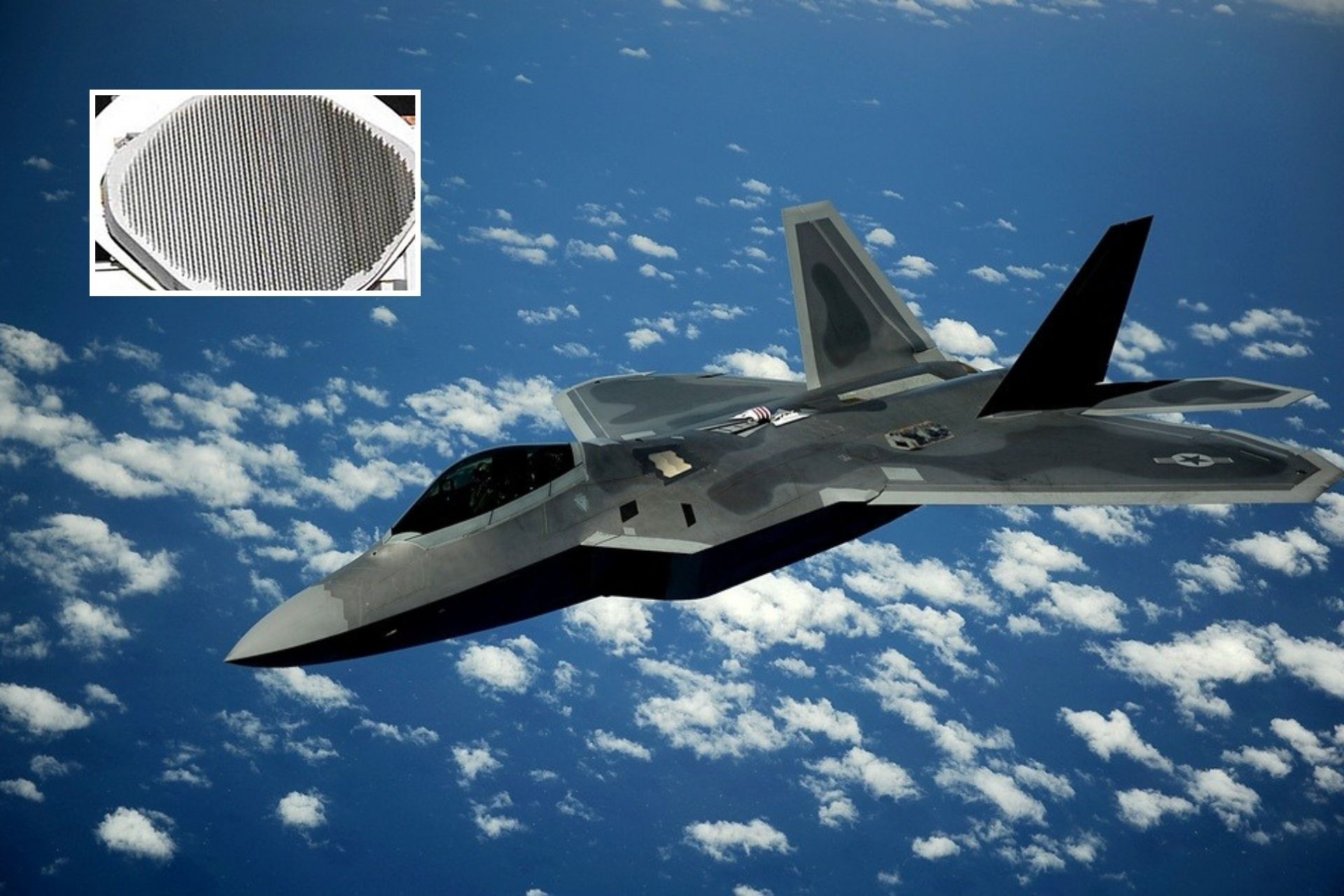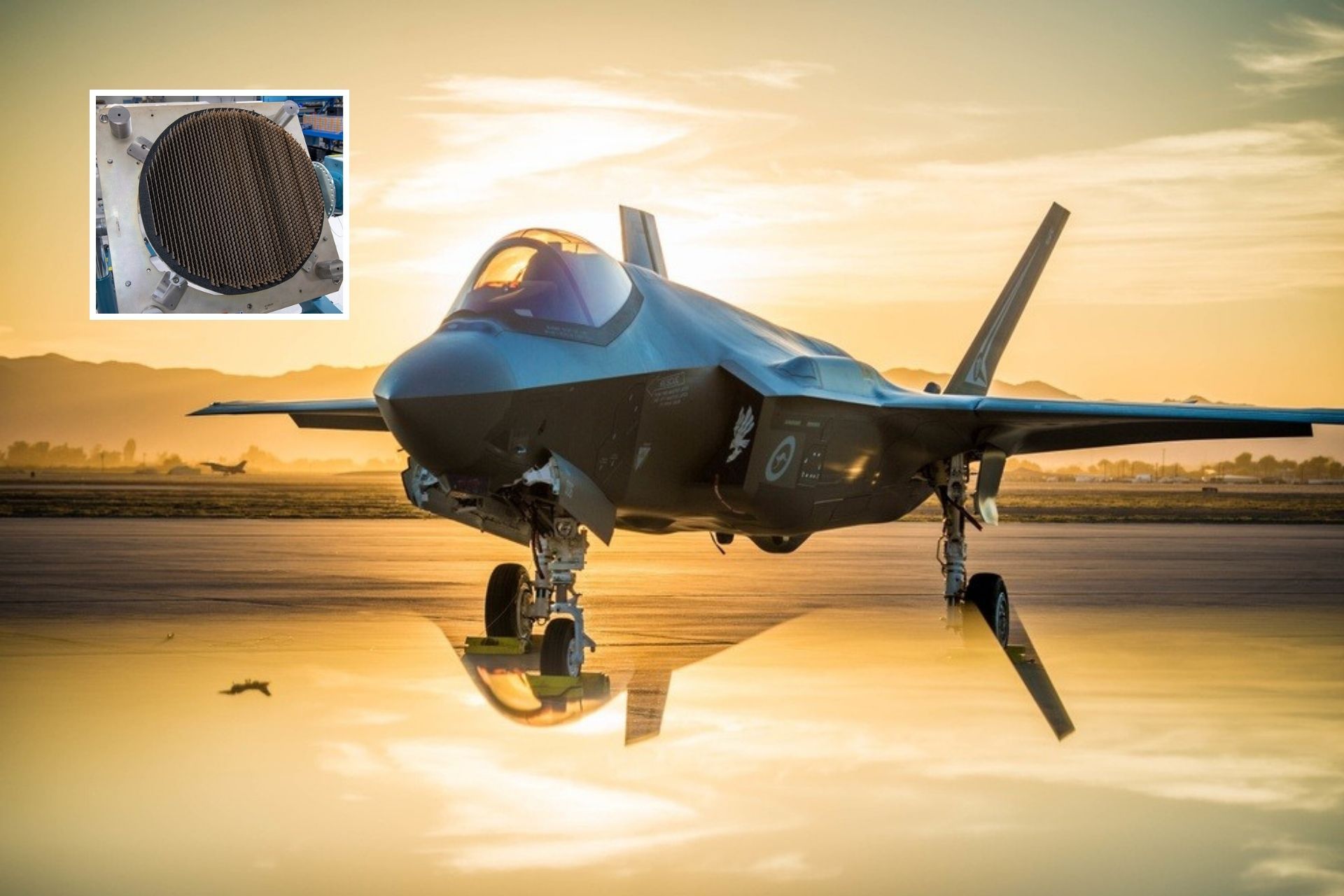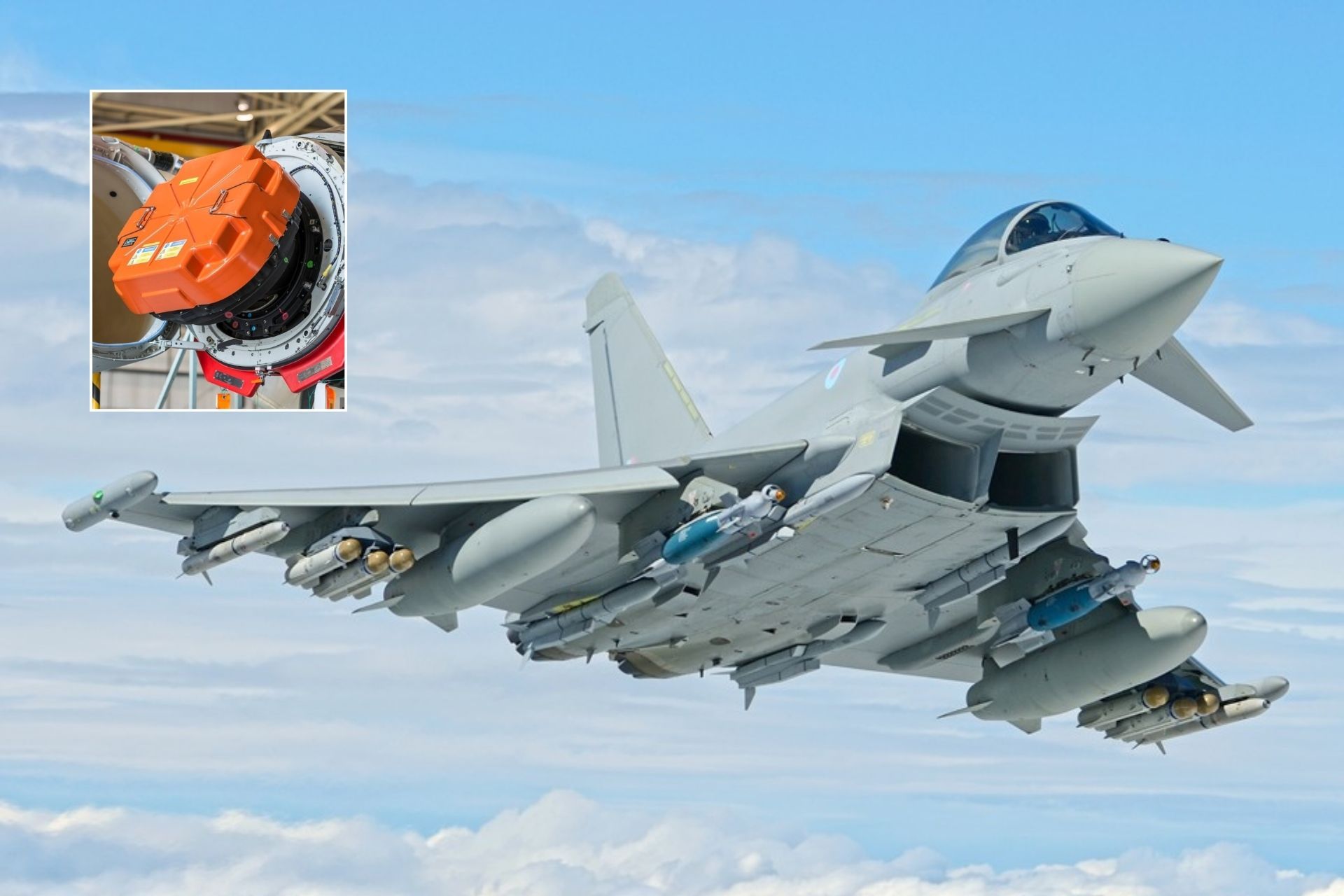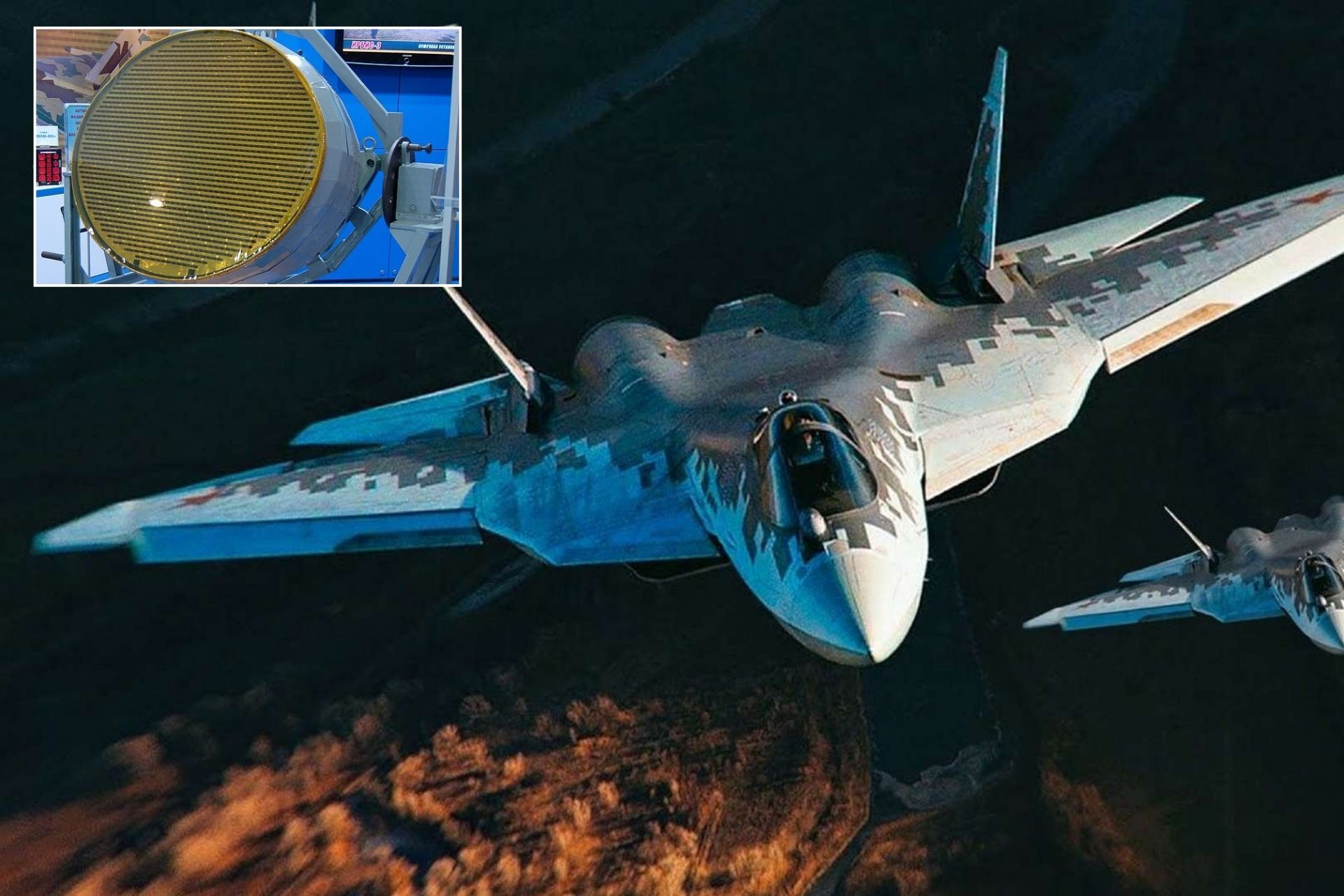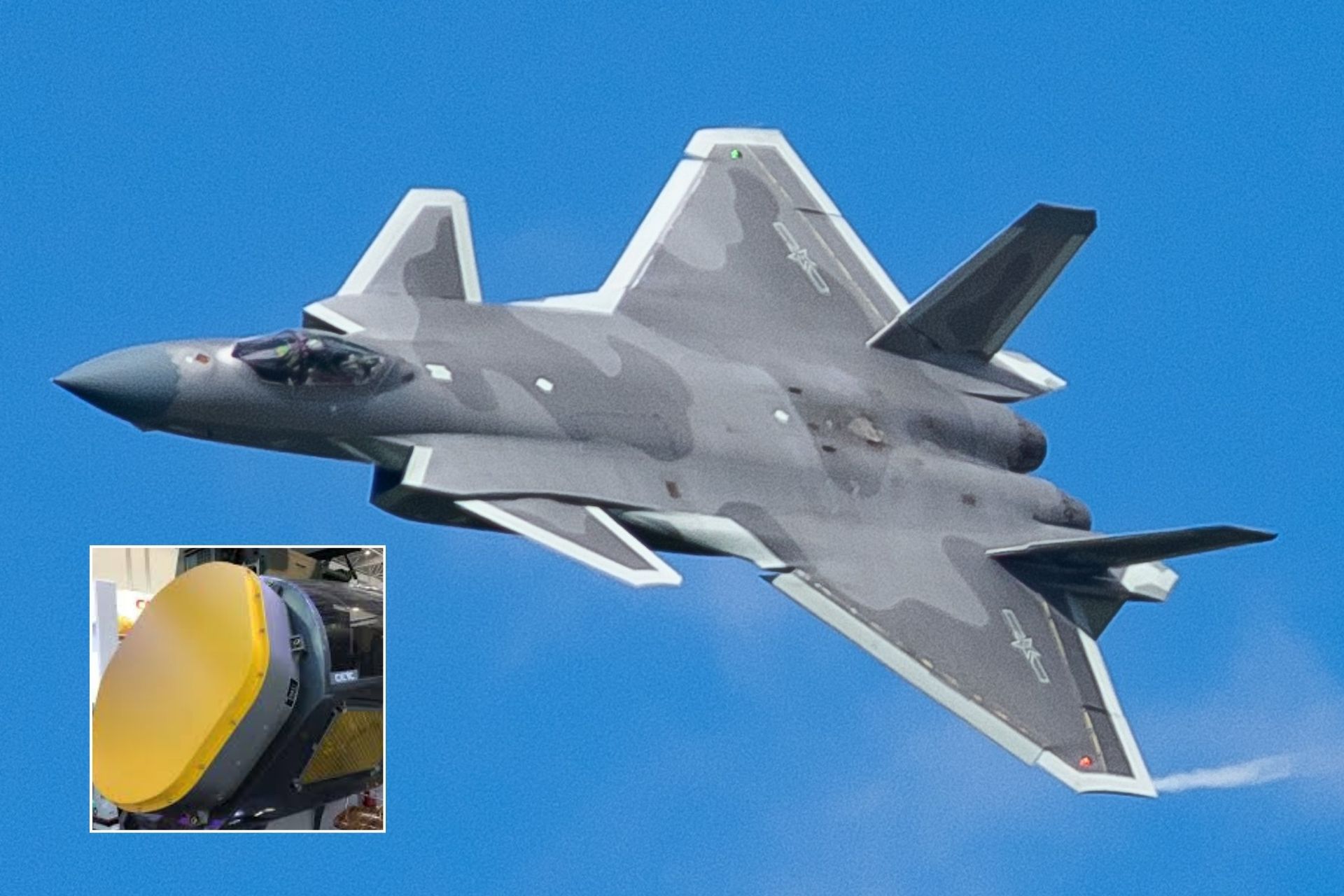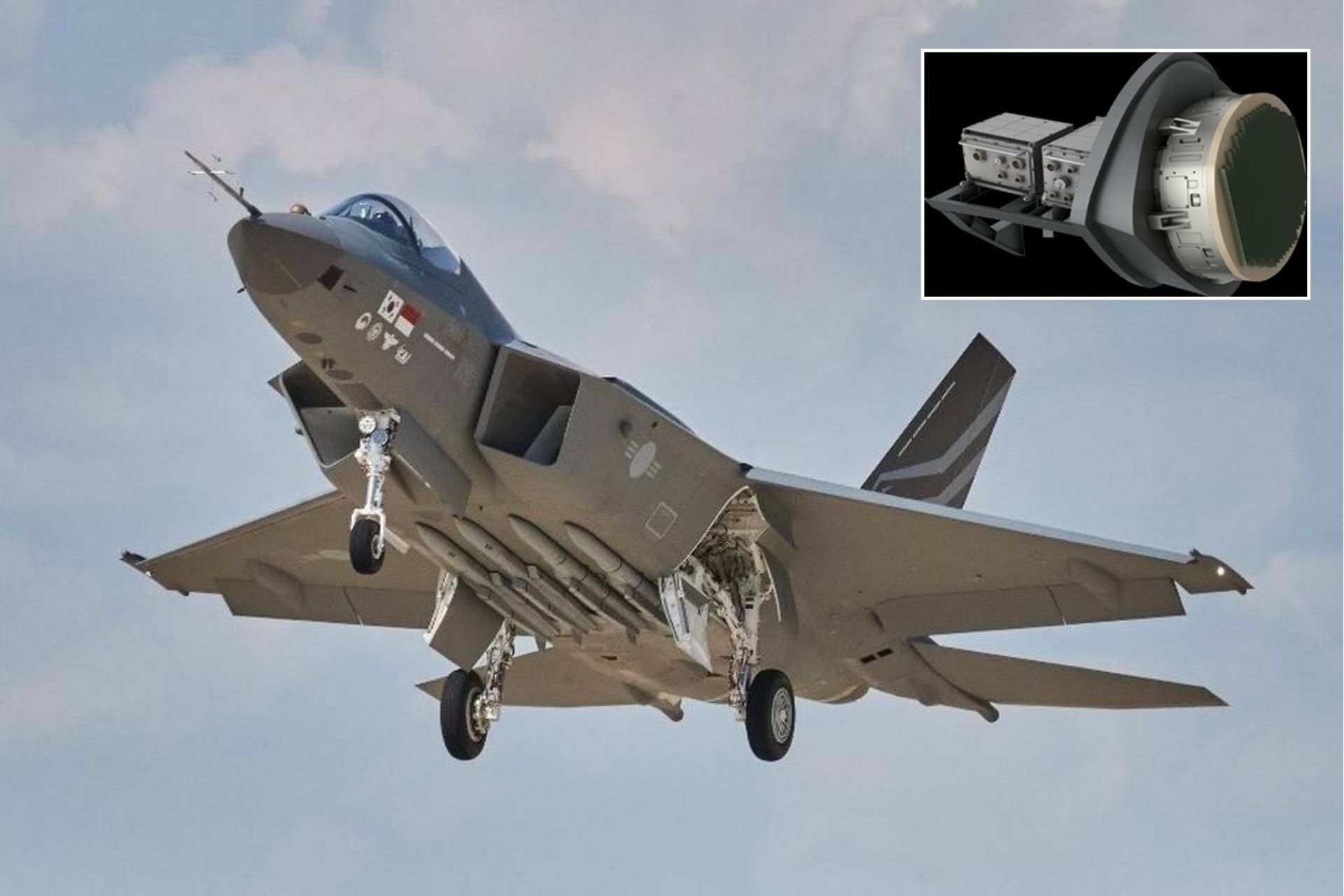Breaking News
Focus: AESA Radars: Pillar of 4th and 5th Generation Fighter Jets.
Active Electronically Scanned Array (AESA) radars have become essential for 4th and 5th-generation fighter jets. This revolutionary technology, developed over several decades, offers unparalleled detection and tracking capabilities critical for modern multirole missions. This focus explores the various AESA radars equipping today's main fighter jets, highlighting their characteristics and comparative advantages, before presenting emerging radar technologies. Follow Army Recognition on Google News at this link

AESA radars stand out for their ability to electronically scan an area without physically moving the antenna(Picture source: Hanwha Systems)
For decades, electronic scanning radars have been developed to replace traditional mechanical systems, which required physically pointing their antenna towards the area to be monitored. Thanks to component miniaturization and increased computing power, AESA radars now allow detection without mechanical inertia, ensuring increased versatility and responsiveness.
AESA radars stand out for their ability to electronically scan an area without physically moving the antenna. With thousands of transmit-receive modules (TRM), each module can independently send and receive signals, offering considerable operational flexibility. Compared to mechanical scanning radars, AESA radars are more robust, require less maintenance, and provide better redundancy in case of partial failure
The F22 Raptor and the F35 Lightning II are both equipped with a Northrop Grumman radar, the French company Thales equips the Rafale, and the Eurofighter is equipped with a Leonardo radar (Picture source: Lockheed Martin/Dassault/Royal Air Force)
The F-22 Raptor, the flagship of the US Air Force, is equipped with Northrop Grumman's AN/APG-77 radar. This AESA radar is known for its ability to detect and simultaneously track multiple aerial targets at long distances while remaining stealthy. The AN/APG-77 uses gallium nitride (GaN) TRM modules, offering increased power and efficiency compared to traditional gallium arsenide (GaAs) modules. Its jamming and electronic counter-countermeasure (ECCM) capabilities make it a formidable tool in aerial combat.
The F-35 Lightning II is equipped with Northrop Grumman's AN/APG-81 radar, an evolution of the AN/APG-77. This radar is designed for multirole missions, capable of providing high-resolution radar images for mapping, tracking moving ground targets, and detecting aerial targets. It also integrates electronic warfare and communication capabilities, allowing the F-35 to function as a central node in an integrated combat network. The AN/APG-81 is notable for its ability to detect stealth targets, a major asset in modern combat scenarios.
The Dassault Rafale is equipped with Thales' RBE2-AA radar, the first AESA radar to equip a European fighter jet. This radar offers enhanced detection and tracking capabilities, particularly effective for long-range interceptions due to its compatibility with the Meteor air-to-air missile. The RBE2-AA also enables terrain-following and high-resolution mapping missions, increasing the Rafale's versatility. Its ability to operate in jamming environments and resist electronic countermeasures enhances its combat effectiveness.
The Eurofighter Typhoon is equipped with Leonardo's Captor-E radar, a significant advancement over the initial mechanical scanning radar. The Captor-E, with its TRM modules, offers extended angular coverage and increased scanning speed, allowing simultaneous detection and tracking of multiple targets. It is also capable of electronic warfare and support missions, making it a versatile asset for European air forces.
AESA radars represent a major technological advancement for modern fighter jets, offering unprecedented detection, tracking, and electronic warfare capabilities (Picture source: Wikimedia/Hanhwa)
The Russian 5th generation Su-57 Felon fighter jet is equipped with the N036 Byelka radar. This AESA radar is unique, incorporating secondary radars on the sides of the cockpit for 360° coverage. The N036 Byelka excels in long-range detection and tracking of stealth targets, while offering advanced electronic warfare capabilities. Its modular design provides operational flexibility and increased redundancy in case of failure of some TRM modules.
The Chinese stealth fighter Chengdu J-20 is equipped with the Raven ES-05 radar. This AESA radar, developed to offer long-range detection capability and excellent resistance to electronic countermeasures, enables the J-20 to perform air superiority missions with formidable efficiency. The Raven ES-05 is also designed to provide high-resolution radar imaging and multiple target tracking capabilities, enhancing the J-20's versatility.
The South Korean next-generation multirole fighter KAI KF-21 is equipped with an AESA radar developed by Hanwha Systems. This radar is designed to provide precise detection and tracking of aerial and ground targets, with integrated electronic warfare capability. The KF-21's AESA radar represents a major technological advancement for South Korea, increasing the country's technological autonomy in weapon systems.
AESA radars represent a major technological advancement for modern fighter jets, offering unprecedented detection, tracking, and electronic warfare capabilities. The future of combat radars may see the emergence of even more advanced technologies, such as Low Probability of Intercept (LPI) radars, multi-static radars, quantum radars, and AI-based radars.
LPI radars are designed to avoid detection by enemy surveillance systems. They emit low-power signals and use complex waveforms to reduce the probability of interception and localization. The United States, through defense companies like Raytheon and Northrop Grumman, is at the forefront of this technology, working to integrate it into future radar systems for fighter jets and drones.
Multi-static radars use multiple spatially separated transmitters and receivers to detect and track targets. This configuration overcomes some limitations of monostatic radars, such as stealth effects and electronic countermeasures. Russia and China are heavily investing in this technology, hoping to increase the resilience and detection capability of their air defense systems.
Quantum radars, still in the research and development phase, promise unparalleled sensitivity and precision by exploiting quantum mechanics principles. They can theoretically detect objects with much higher position and speed accuracy than conventional radars. Countries like the United States and China are leading in this field, with research institutions such as Peking University and MIT working on the first prototypes.
AI-based radars use advanced machine learning algorithms to improve target detection, classification, and tracking. AI can optimize radar parameters in real-time to adapt to changing battlefield conditions, enhancing resilience against electronic countermeasures and dense jamming environments. Thales in France, along with Raytheon and Northrop Grumman in the United States, are key players in developing these systems, seeking to integrate AI capabilities into their future radars.
These technological advancements enable air forces to have versatile multirole aircraft capable of performing various missions, ranging from air superiority to reconnaissance and electronic warfare. Component miniaturization and increased computing power allow today's AESA radars to detect targets with unprecedented precision and speed. Modern fighter jets equipped with these radars have a significant strategic advantage, enhancing their operational effectiveness across all theaters of operation. Companies like Raytheon, Northrop Grumman, and Thales continue to push the boundaries of radar technology, promising to further revolutionize detection and air superiority in the coming decades.



























